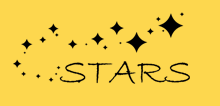Mentor
Dr. Adrienne Dove
Abstract
Asteroids and other small planetary bodies are covered in a loose, dynamic layer of multi-sized dusty particles. We are focused on developing methods to further understand this surface regolith behavior to inform future landing missions on these small bodies for resource collection. The Strata-1 experiment was designed to study granular behavior in a passive, microgravity, airless environment. These conditions, simulating that of an asteroid’s surface, were attained by installing Strata-1 aboard the International Space Station for 347 days. In this experiment, we took images of red, green, and blue multi-sized glass shards within a tube to better understand their stratigraphy. Images of this experiment were analyzed using a procedure written in Python to assess surface area coverage for each shard color. This paper focuses on the development of these analysis methods, which use a combination of automated and manual analysis to demonstrate the validity of methods used, as well as to characterize the particle behavior beyond position by including movement patterns amongst the colored shard groups and sub-regions of the experiment tube. Our methods proved to yield valuable insights on the shard stratification across a long duration of time. Our automated procedure offers a viable approach to future experiments which seek to understand small particle behavior in asteroidal conditions.
Recommended Citation
Gomer, Gillian; Fraser, Michael; Meola, Anthony; and Guzman, Raquel
(2023)
"Characterizing Particle Bed Stratigraphy as a Function of Particle Size in an Airless, Microgravity Environment,"
The Pegasus Review: UCF Undergraduate Research Journal: Vol. 15:
Iss.
1, Article 2.
Available at:
https://stars.library.ucf.edu/urj/vol15/iss1/2

